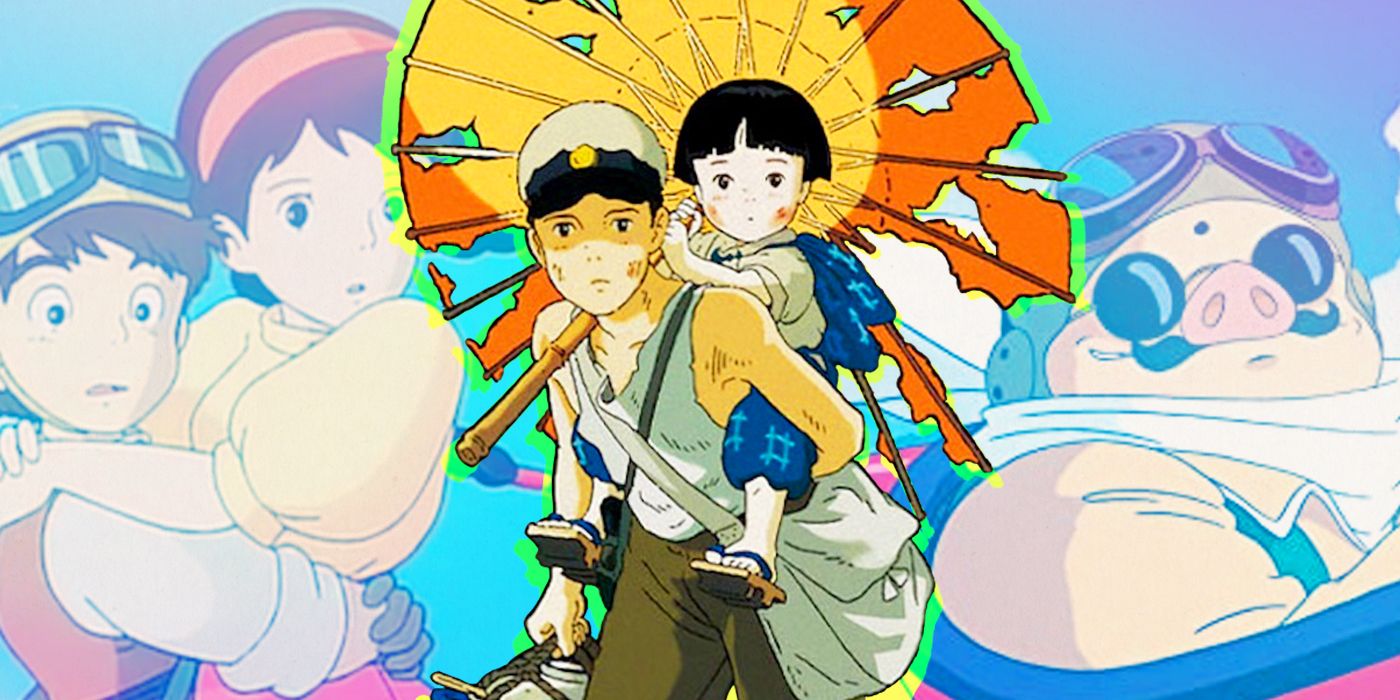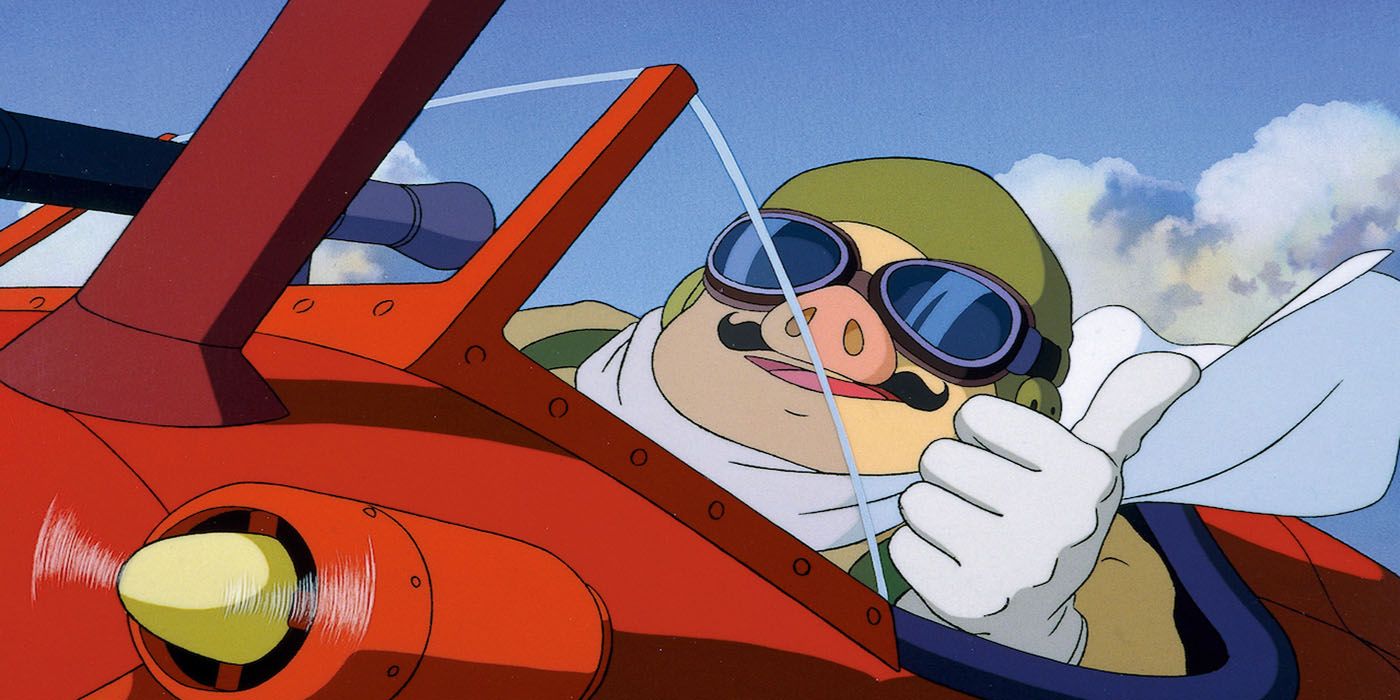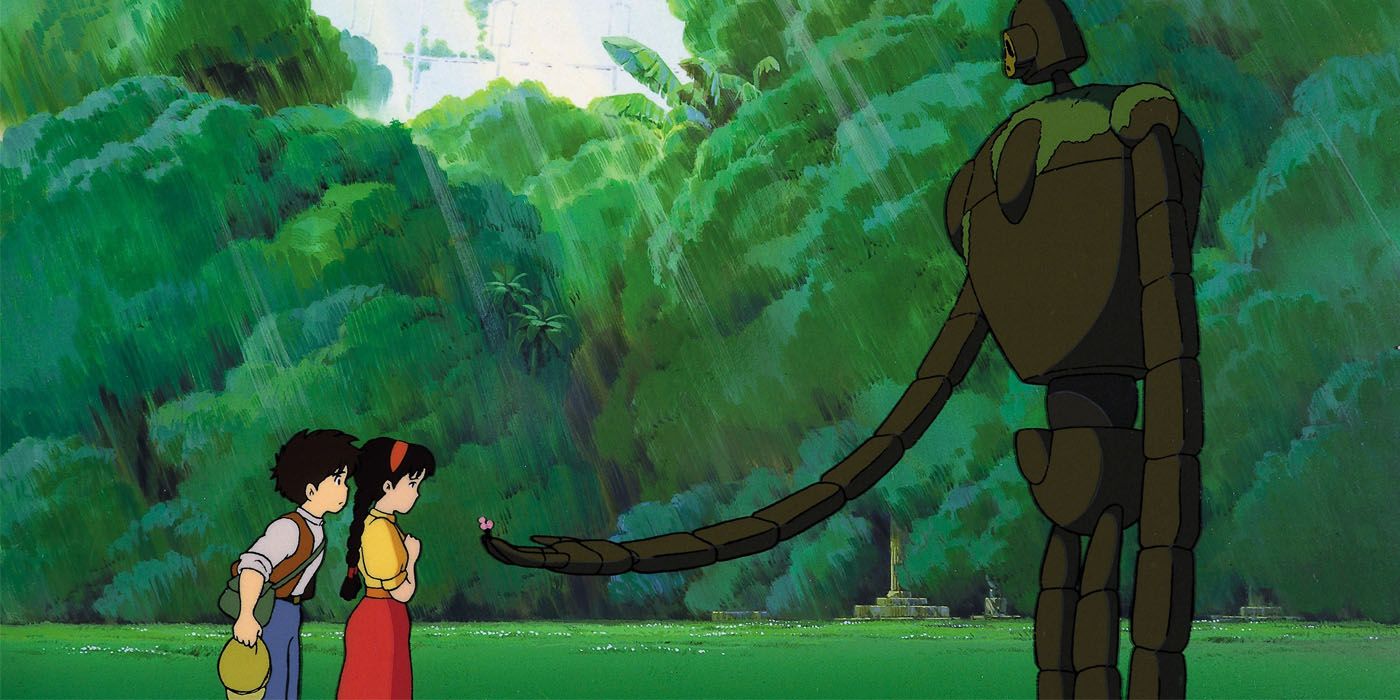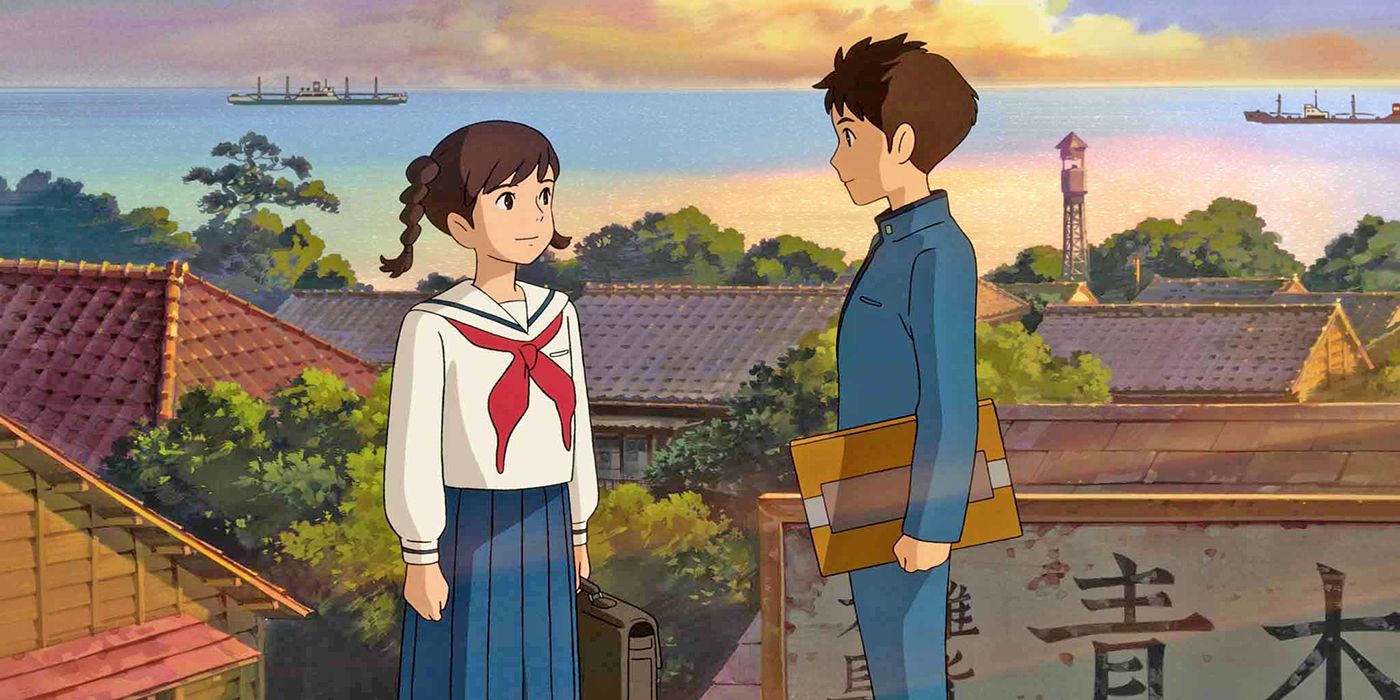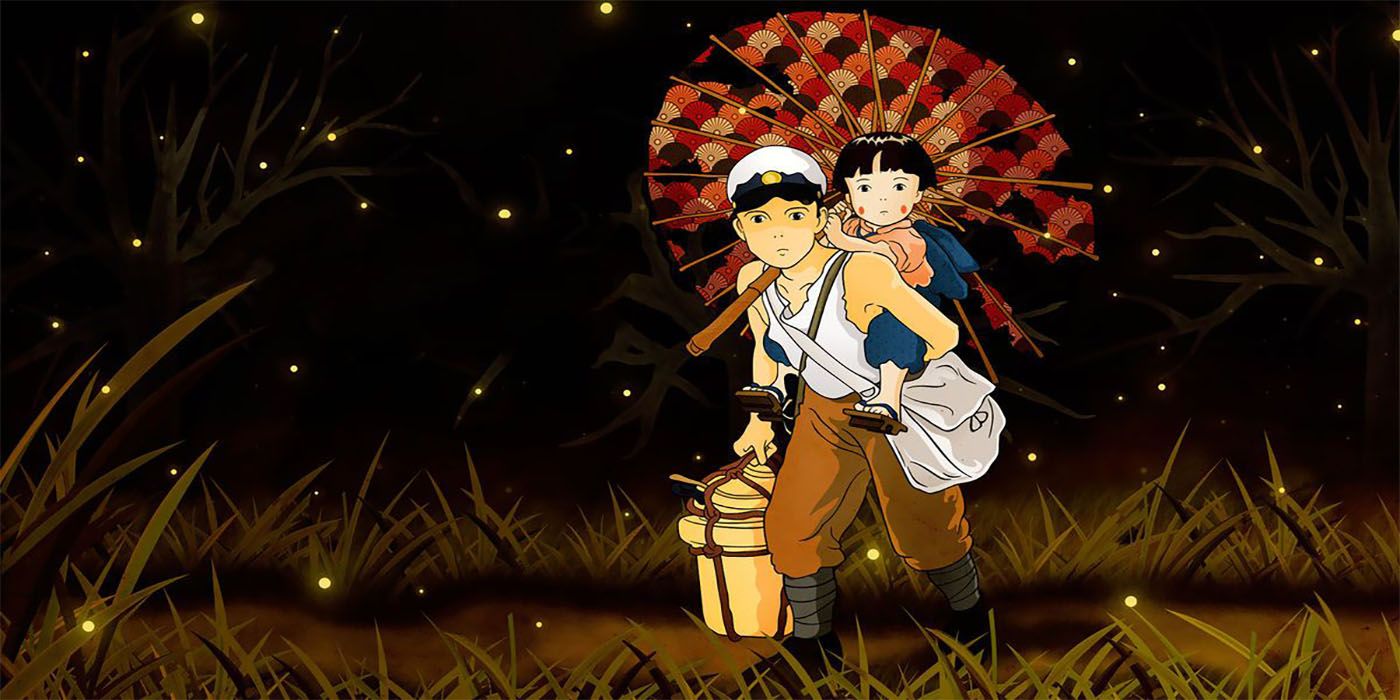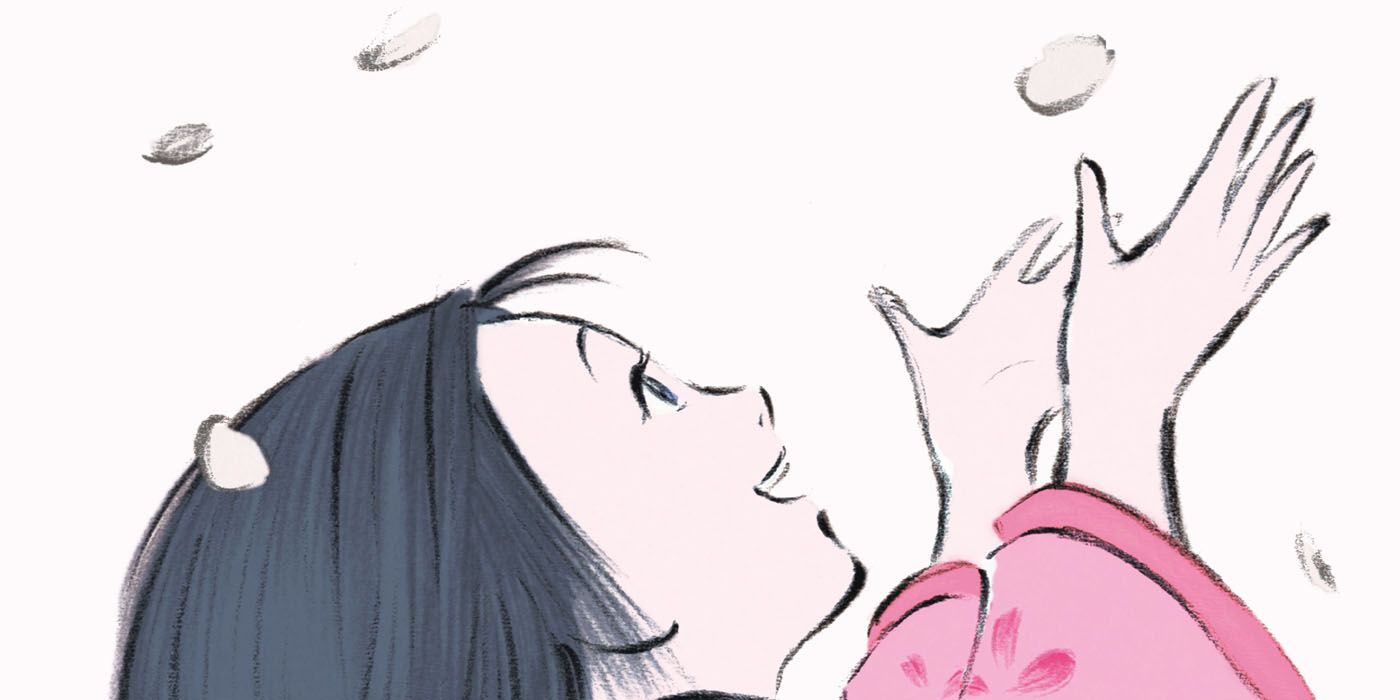There's no anime film production studio that conjures more recognition and admiration than Studio Ghibli -- known worldwide for their outstanding artistry, attention to detail and mesmerizing stories. Most people are familiar with the studio's more famous works, like Spirited Away, Princess Mononoke, and Kiki's Delivery Service. But Studio Ghibli's catalog spans multiple decades with plenty of films in their repertoire that all share the same quality level.
Let's take a look at some of Studio Ghibli's more underrated films and see what makes them just as good, if not better, than some of the studio's more popular films.
Porco Rosso
Porco Rosso, released back in 1992, is another absolute hit from the studio and a family-friendly gem that ages like a fine wine. Directed by Hayao Miyazaki, the film follows an Italian World War I ex-fighter who now lives as a freelance bounty-hunter that chases air pirates in the Adriatic Sea. Marco Pagot, the protagonist, is a pig known better as Porco Rosso, which means "Red Pig." After losing most of his squad back in the war, Marco cursed himself and became a pig. After all, what's Ghibli without their signature, magical touch?
The story has many themes found in Miyazaki's other works, following threads of war, love, compassion and humanity. It has the magnificent artwork signature to Studio Ghibli while incorporating a new, unique story that is magnificent from start to finish. For kids, it's a fun story about a pig in a plane. For adults, it's a story of guilt that refuses to go away, no matter how much one redeems themself. It strikes the perfect balance between the two lines, making an excellent movie for the whole family. It's worth a watch -- and deserves much more attention.
Laputa: Castle in the Sky
Another film from Miyazaki's trove, Laputa: Castle in the Sky, is a masterpiece from 1986. It was the first film ever produced by Studio Ghibli, and it set the bar high (which explains the studio's impressive standards). The film follows Sheeta, a young orphan girl, and her new friend Pazu as they search for the legendary floating city of Laputa while being pursued by military agents. There are many layers to this film, but it incorporates common themes found in Studio Ghibli films: environmental protection, technology vs. nature, and compassion above all.
While the animation leads one to think this film is targeted towards children, the content of Laputa is dense and very thought-provoking. It tries to conquer ethical questions, such as "Are humans truly meant to live on Earth and in the sky?" and "Is death a fair price to pay for riches?" It does all this with beautiful scenes, striking musical compositions and other signature hallmarks of Studio Ghibli. While it is an older one from the vault, it's the original Ghibli work and it stands the testament of time, only becoming more relevant with age.
From Up on Poppy Hill
From Up on Poppy Hill was directed by Gorō Miyazaki and was released in 2011. While it goes under many Ghibli fans' radar, it is definitely worth the watch. It's a slice of life movie that follows two high school students in 1963 Yokohama, Japan, as they try to process new emotions while trying to save their school's clubhouse. It's a very calm, tranquil movie that touches on some challenging emotions, like the loss of family members.
The film perfectly balances romance with the real-world struggles that both main characters share. As with most Ghibli films, it also features war and its consequences -- drawing it out to its logical conclusion of losing the people we love. While it may not have much in the way of the supernatural or mystical themes common to many Ghibli films, it takes what's great about the studio and transfers it to a different type of story.
Grave of the Fireflies
Arguably one of the saddest films ever, Grave of the Fireflies is one of the very best films that Studio Ghibli has to offer. Released in 1988 and directed by Isao Takahata, the film follows two children as they struggle to survive in Japan during the last few months of World War II. It's raw, honest and beautiful all at the same time. It doesn't shy away from the reality of wartime, despite it being an animated film. It uses the artistic medium to its advantage, showing things that would be a lot harsher to witness if it were live-action.
Grave of the Fireflies focuses on the personal tragedies that come with the nature of war, and, for some, this can be very difficult to watch. Still, it's important that a movie like this was made because it points a finger directly at the problems of war and shows what the glorified stories try to hide. It's a beautiful film in form, but its content is what makes it so iconic.
The Tale of Princess Kaguya
A classic folk story retold in brilliant, water-color animation, The Tale of Princess Kaguya is the sparkling diamond in Studio Ghibli's collection. Released back in 2013, it's another film by Isao Takahata. It's an adaption of the 10th-century Japanese literary tale called The Tale of the Bamboo Cutter. The film is about a bamboo cutter who finds a small princess in a bamboo stalk and decides to raise her. While a child, she's raised in the rural fields around the bamboo fields, but as she grows, the bamboo cutter decides to move her to the capital city.
While the story is incredible, this film's art style is especially striking and takes a different approach when compared to other Ghibli films. Every scene is hand-drawn and looks as if it's painted with watercolors. A few fast-paced scenes are breathtaking to watch, as you can see the artist's tension in bold, sharp strokes. Even other Ghibli films that are also hand-drawn look entirely digital compared to Kaguya. It uses white space to its advantage and highlights that it's an old story by making each frame look like a drawing in a book. The combination of art style and story makes this film outstanding.

